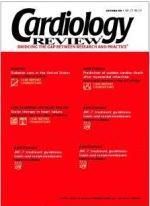Publication
Article
Cardiology Review® Online
Case report: Standard medical intervention for cardiomyopathy
A 48-year-old woman was referred to the cardiology outpatient clinic for the evaluation of progressive shortness of breath and leg swelling. She had no known significant medical history. Her last hospitalization was 20 years earlier, when she had a normal delivery of her second child. She was in good health until 4 months ago, when she began to notice symptoms. Her blood pressure had always been normal. She was a nonsmoker and did not use recreational drugs or alcohol. She had no recent viral or upper respiratory tract infections.
Assessment and diagnosis
Her electrocardiogram (ECG) showed sinus rhythm, normal wave intervals, and a normal axis. An echocardiogram showed a dilated left ventricle and a globally decreased left ventricular function with an ejection fraction of 23%. There was no evidence of valvulopathy. Her hematocrit, serum antinuclear antibody, thyroid, and iron studies were normal. She tested negative for human immunodeficiency virus. Cardiac catheterization revealed no obstruction in the epicardial coronary arteries.
The diagnosis of idiopathic dilated cardiomyopathy was made based on the clinical and laboratory findings. The patient started taking a diuretic and an angiotensin-converting enzyme (ACE) inhibitor. Subsequently, the ACE inhibitor dosage was gradually increased, and the patient was given a beta blocking agent.
Outcome
The patient’s condition remained stable over the next 4 years until she was hospitalized for progressive shortness of breath. Her ECG and echocardiogram were unchanged. The patient responded well to diuretic therapy. During the hospitalization, telemetry monitoring revealed several episodes of asymptomatic, nonsustained ventricular tachycardia with a rate of 190 beats per minute. The QRS duration was normal. A cardiac magnetic resonance image showed viable myocardium, globally decreased left ventricular function, and a dilated left ventricle.
Amiodarone was recommended to decrease the risk of a cardiac arrest. However, the patient declined therapy with amiodarone. Based on current data, an implantable cardioverter-defibrillator (ICD) was not recommended. The patient was discharged to her home taking an ACE inhibitor, a beta blocker, and a low dose of a potassium-sparing diuretic. During the ensuing 1 year, the patient’s condition remained stable and she did not require further hospitalization.
